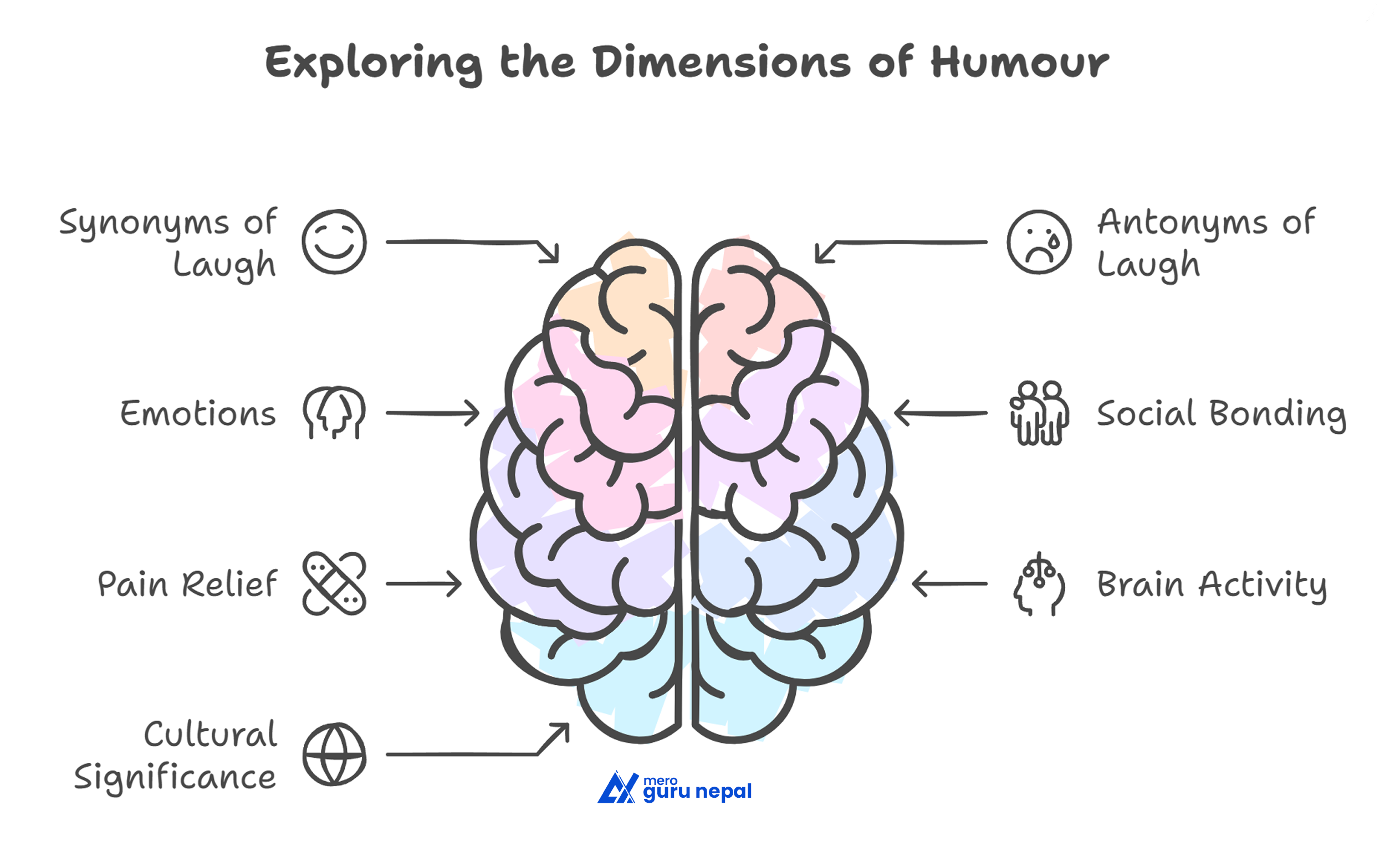Solution of exercise of Humour.
Here is the solution to all the exercises of the class 12 English chapter 7.


Audio summary of the letter
Continue reading with our latest English Guide App anytime









Summary
The chapter Humour explores the science and social significance of laughter. It presents findings from neuroscientist Sophie Scott, who explains that laughter is a complex, universal human behavior that often has more to do with social bonding than humor itself. Through studies across cultures, it’s shown that laughter is contagious, meaningful, and vital for relationships, acting as a painkiller and a stress reliever. The chapter also dives into emotions related to laughter, contrasts humor with other emotional responses, and discusses how laughter plays an important role in communication, even among couples and in public performances like stand-up comedy. Exercises reinforce vocabulary, emotional understanding, grammar (adverbs of frequency), and personal reflection through writing.
Key Takeaways
- Laughter is universal and one of the most misunderstood behaviors.
- It serves social bonding purposes rather than always being about humor.
- Couples who laugh together tend to have longer-lasting relationships.
- Laughter acts as a painkiller, thanks to the release of endorphins.
- People may laugh or giggle during pain or awkwardness as a coping mechanism.
- Laughter is contagious, especially in crowds, which comedians use to their advantage.
- Babies and adults alike share two emotional expressions: crying and laughter.
- Emotional expressions like fear, anger, disgust, happiness, sadness, surprise, relief, and triumph have specific definitions and social roles.
- Grammar focus: frequency adverbs like “often,” “sometimes,” and “never.”
- Writing tasks explore personal reflection, like describing a favorite comedian (e.g., Charlie Chaplin).
FAQ:
Why do people sometimes laugh during painful or awkward situations?
They may laugh to reassure themselves and others that they are okay or to ease emotional discomfort.
What did Sophie Scott discover through her study in Namibia?
She found that laughter is one of the most important and rich vocal behaviors humans use.
How is laughter used in social bonding?
Laughter brings people together and strengthens relationships, even without something being overtly funny.
How does laughter benefit romantic relationships?
It helps reduce tension and contributes to emotional connection and longer-lasting bonds.
In what way does laughter act like a painkiller?
Laughter increases pain thresholds by triggering the release of endorphins, which are natural pain relievers.
What part of the brain is involved in responding to laughter?
The brain’s mirror regions, which mimic others’ actions, are activated during laughter.
Which emotions are considered universal?
Fear, anger, surprise, disgust, sadness, happiness, relief, and triumph.
How do comedians benefit from crowd laughter?
The contagious nature of laughter in a crowd amplifies their performance and helps them connect with the audience.
What is meant by “there is always a meaning to it” in regard to laughter?
Laughter is never truly neutral; it always reflects an emotional or social context.
How is Charlie Chaplin an example of timeless humor?
Through his character “The Tramp,” Chaplin used silent comedy and relatable struggles to connect universally with audiences, often combining humor with emotion.


Leave a Reply